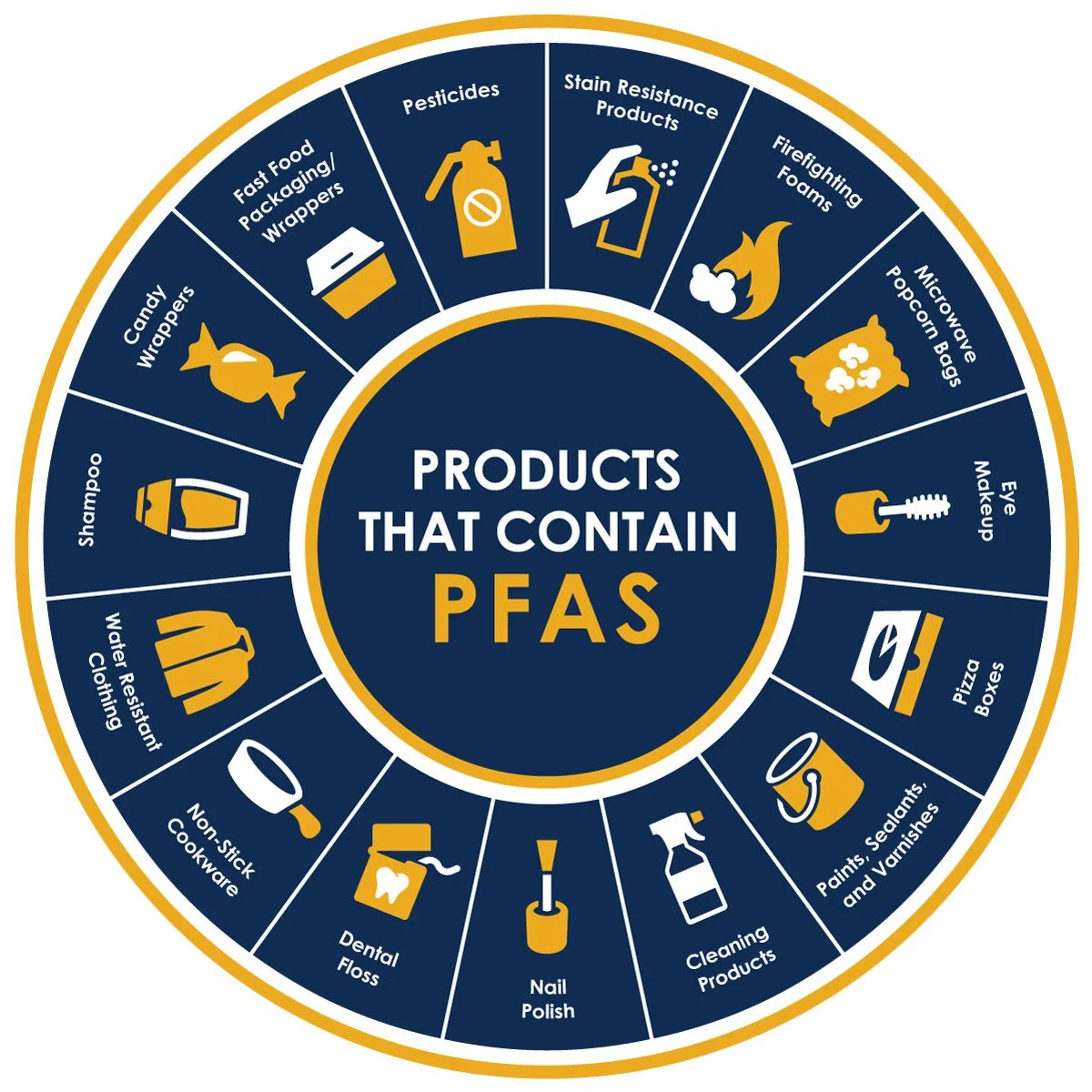PFAS, Forever Chemicals, and Health
The Environmental Protection Agency sets a federal limit for the amount of toxic material that is safe for individual exposure. On June 15 2022 the EPA announced the establishment of near-zero levels of risk threshold for per- and polyfluoroalkyl substances, or PFAS, which previously was set to 70 parts per trillion. Understanding the science behind this class of substance will be crucial to the safe administration of policy addressing health concerns related to PFAS now and in the future.
PFAS are a class of synthetic chemical compounds that are mainly recognized as surfactants, which can reduce surface tension and create hydrophilic barriers. Simply put, materials coated with PFAS are water-resistant and can prevent things from sticking to them. You can read further about their complex chemical composition here.
The use of PFAS is ever-present in modern society. Given their practical applications, PFAS are found in soil, air, and water, as well as in the blood of over 97% of Americans. The most common uses for PFAS are:
Non-stick cooking implements coated with Teflon
Fabrics in water-resistant clothing like Gore-Tex
Stain-resistant materials found in carpets
Foams used for firefighting
One of the most important things to know about PFAS is their status as “forever chemicals.” Since they largely do not occur naturally, PFAS do not degrade in the environment. Instead, they accumulate in their surroundings and in the human body. Studies indicate that PFAS persist in the environment for thousands of years, creating multigenerational contamination problems.
The possible health effects of PFAS are numerous. As discussed, PFAS are present in the majority of human bodies, and they will persist in our water, air, and soil until remedial action is taken. There are likely more health effects caused by PFAS that further research will discover, but the currently known health effects include:
Increased levels of cholesterol
Changes in blood pressure, especially among pregnant women
Increased risk of kidney and/or testicular cancers
Changes to the liver
Thyroid problems
Decreased response to vaccines
The EPA is responsible for setting levels of consumption of toxic materials at which health effects are not expected to occur. Each substance has a varying threshold, and some, such as lead, have no safe level when encountered. When a threshold level of a contaminant is detected throughout a system, this typically triggers an action from the EPA or its constituent agencies to remediate the situation. In theory, these actions safeguard the health of residents throughout the country. In practice, however, high levels of contaminates have not always been treated. In the case of PFAS, the EPA quietly released a report indicating that many more people were affected by PFAS exposure than initially anticipated.
Additionally, the EPA is required to act only when actual harm has been detected to communities, which gives a lot of power to companies who produce and dispose of toxic chemicals. If they do not report a certain threshold of exposure and harm, the EPA is not entitled to act on the exposure, at times allowing these companies to essentially regulate themselves.
Even worse, marginalized communities such as people of color or low socioeconomic status have greater exposure to environmental contaminants, bearing a greater burden of health effects compared to more affluent, Whiter communities. In regards to PFAS specifically, studies suggest that environmental exposure is more frequent among ethnic and racial minorities, depending on the PFAS evaluated. This interactive map from the Environmental Working Group maps the known contamination sites in the United States as of October 2021.
The companies responsible for most of the fabrication of PFAS have been the subject of several high-profile, high-cost lawsuits in the past few decades. 3M, an industrial goods company that creates items like Scotch tape, PPE, and automotive and medical equipment, is one of the oldest producers of PFAS. In 2018, the company settled an $850 million lawsuit with the State of Minnesota as a result of polluting groundwater with several chemicals, many of them being PFAS. And while companies like Dupont, who has been the subject of several multi-million dollar PFAS lawsuits, claim to have spent hundreds of millions of dollars on PFAS mitigation equipment, many criticize these tactics as avoiding responsibility for the problem while thousands of nearby residents suffer from the health effects of the chemicals.
The upcoming EPA regulation changes to PFAS will suggest an adjustment to the safe level of PFAS to zero. The threshold is currently nonbinding and at this time would not require remediation on the part of companies. The plan also makes available $1 billion in grant funding from the recent bipartisan infrastructure package that is open for states to apply to implement water quality testing initiatives and begin treatment of local issues. Missing from the plan, however, is enforcement of the zero-level threshold, allowing companies that have caused PFAS contamination to continue to report their threshold own levels.

